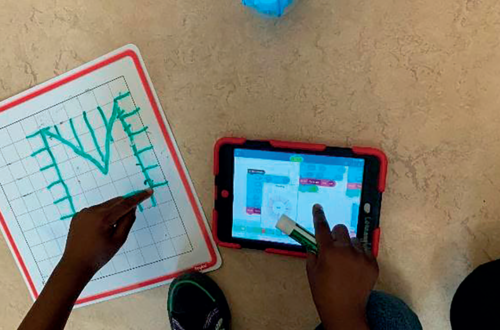Journal of the Mathematics Council of the Alberta Teachers’ Association
Volume 33 Issue 2, June 1996
The Western Canada Protocol, under the leadership of Alberta, is developing a common core mathematics program for British Columbia.Alberta, Saskatchewan, Manitoba, the Yukon and the Northwest Territories. The Grades K-9 curriculum is already established, and the Grades 10-12 program will be in place before the end of this school year. This should allow easier transfer of students throughout western Canada. Publishers should be able to prepare materials for a larger market.
As I see it, the biggest challenge to the success of the new curriculum will be a shortage of qualified teachers. Significantly more emphasis is placed on such areas as statistics and probability, estimation, mental mathematics, the use of technology, and manipulatives. Currently, many mathematics teachers have little or no training beyond high school in either area of content or methods.
If the new curriculum is to be effectively implemented, teachers are going to have to be provided with extensive inservice sessions in mathematics. Postsecondary institutions, Alberta Education, school boards and the ATA are going to have to share responsibility for this training. Teachers, as individuals, must not only pressure for these inservice programs but also attend them. Costs will have to be a shared responsibility.
The new mathematics program should be exciting to teach and should develop in students a genuine enthusiasm for mathematics.
Arthur Jorgensen
1 – 2
3
Arthur Jorgensen
4
George Ditto
5
Wendy Richards
6
Kay Melville
7
Western Canada Protocol Mathematics Team
Marian Oberg
8
Betty Morris
9
10 – 17
Some Ideas on Teaching Data Management
A. Craig Loewen
18 – 20
Computers in Classrooms: Essential Learning Tool… Or Program for Disaster?
Alison Dickie
21 – 24
Ken Harper
25 – 26
Lattice Hexagons: Pattern Discovery Activities
Bonnie H. Litwiller and David R. Duncan
27 – 36
The Seeds of Tomorrow: Iterating Functions
J. Dale Burnett
37 – 43
An Intuitive Meaning for the Number e
Murray L. Lauber
44 – 47
Mathematics as Problem Solving A Japanese Way
Daiyo Sawada
48 – 58
Principles for Fair Student Assessment Practices for Education in Canada
Joint Advisory Committee
59
Art Jorgensen
60
61 – 62
10 Guidelines for Math Teachers
Louise M. Lataille
63



